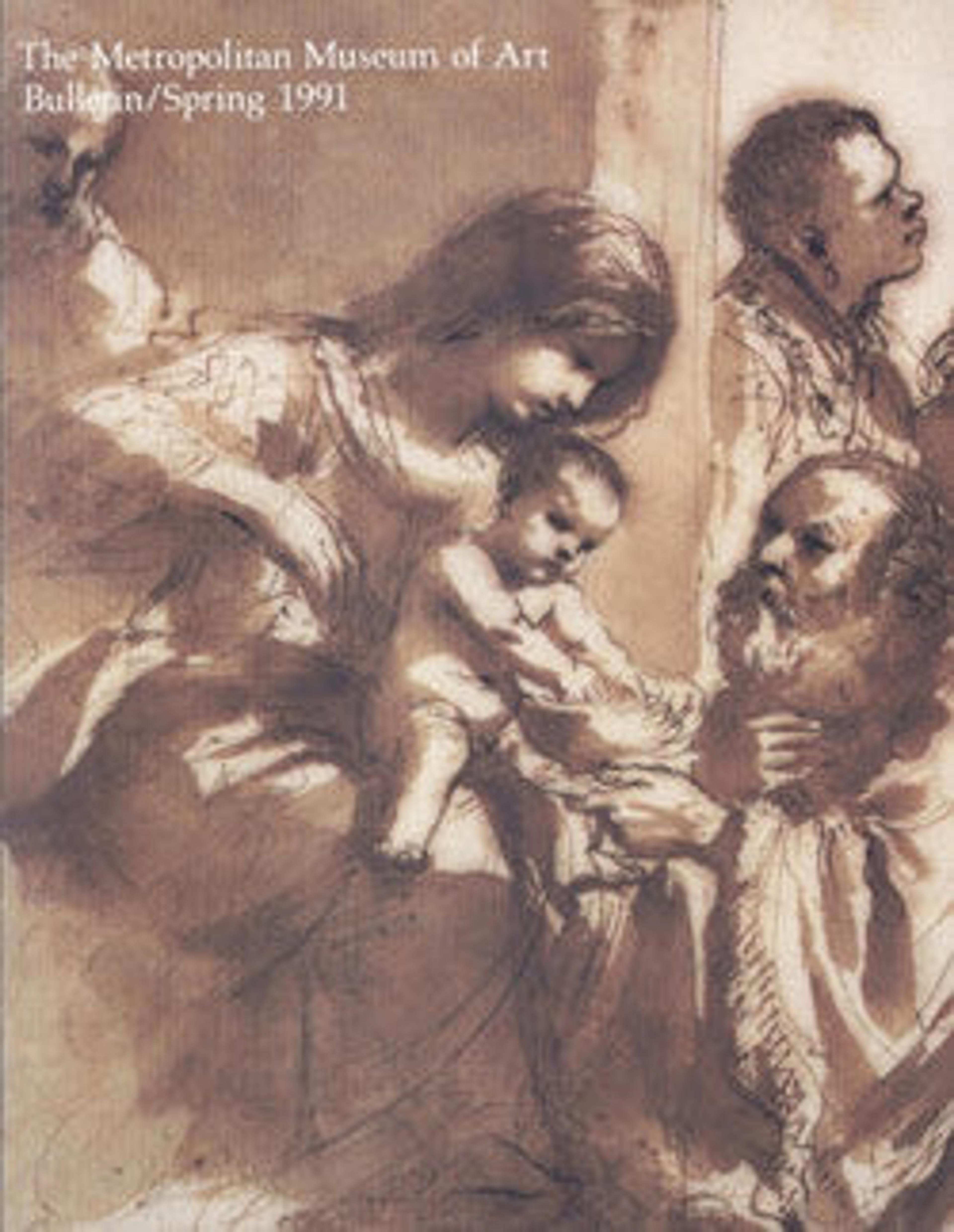Youth in a Chariot with Attendant Young Woman
This rather damaged sketch can be connected to a motif of secondary figures at the upper right of the fresco of Aurora on the ceiling of the Casino Ludovisi, Rome. This connection was pointed out by Carmen C. Bambach in February 2007. The group of figures, members of Aurora's entourage, appears at the upper right of the rectangular opening of Agostino Tassi's sotto in su architectural construction that frames the main scene. Specific points of comparison are a group of three figures with a more prominent young female, who points the way forward with an outstretched left arm and pointer finger. At the bottom right of the Museum's study is what could be the flowing drapery of a figure seen in the fresco who beckons Aurora towards the figure of Night. The figures of the Museum's drawing are conceived in the same direction as those of the fresco design and the setting is clouds.
Instead this motif has been traditionally compared with Guercino's fresco of Rinaldo Abducted by Armida on the ceiling of the Palazzo Costaguti, Rome, which is dated similarly to c. 1621-23. Guercino's ceiling painting in the Palazzo Costaguti, Rome, which represents the sleeping Rinaldo abducted by Armida in a chariot (Mahon, 1968, fig. 7). The subject is derived from Torquato Tasso's Gerusalemme Liberata (XIV, 65-68). However, the youth in this drawing certainly does not appear to be asleep. A pen drawing in the Fitzwilliam Museum, Cambridge, has been identified by Denis Mahon as a study for the Palazzo Costaguti painting, which dates from the second half of 1621 (Mahon, 1969, no. 77, repr.). Stylistically, the Cambridge sketch is quite close to the present drawing.
Instead this motif has been traditionally compared with Guercino's fresco of Rinaldo Abducted by Armida on the ceiling of the Palazzo Costaguti, Rome, which is dated similarly to c. 1621-23. Guercino's ceiling painting in the Palazzo Costaguti, Rome, which represents the sleeping Rinaldo abducted by Armida in a chariot (Mahon, 1968, fig. 7). The subject is derived from Torquato Tasso's Gerusalemme Liberata (XIV, 65-68). However, the youth in this drawing certainly does not appear to be asleep. A pen drawing in the Fitzwilliam Museum, Cambridge, has been identified by Denis Mahon as a study for the Palazzo Costaguti painting, which dates from the second half of 1621 (Mahon, 1969, no. 77, repr.). Stylistically, the Cambridge sketch is quite close to the present drawing.
Artwork Details
- Title: Youth in a Chariot with Attendant Young Woman
- Artist: Guercino (Giovanni Francesco Barbieri) (Italian, Cento 1591–1666 Bologna)
- Date: ca. 1621–23
- Medium: Pen and brown ink, brush and brown wash
- Dimensions: sheet: 6 9/16 x 7 13/16 in. (16.7 x 19.9 cm)
- Classification: Drawings
- Credit Line: Gift of Cornelius Vanderbilt, 1880
- Object Number: 80.3.294
- Curatorial Department: Drawings and Prints
More Artwork
Research Resources
The Met provides unparalleled resources for research and welcomes an international community of students and scholars. The Met's Open Access API is where creators and researchers can connect to the The Met collection. Open Access data and public domain images are available for unrestricted commercial and noncommercial use without permission or fee.
To request images under copyright and other restrictions, please use this Image Request form.
Feedback
We continue to research and examine historical and cultural context for objects in The Met collection. If you have comments or questions about this object record, please contact us using the form below. The Museum looks forward to receiving your comments.
